Gravity According to Tyson
Air Date: Week of October 18, 2013
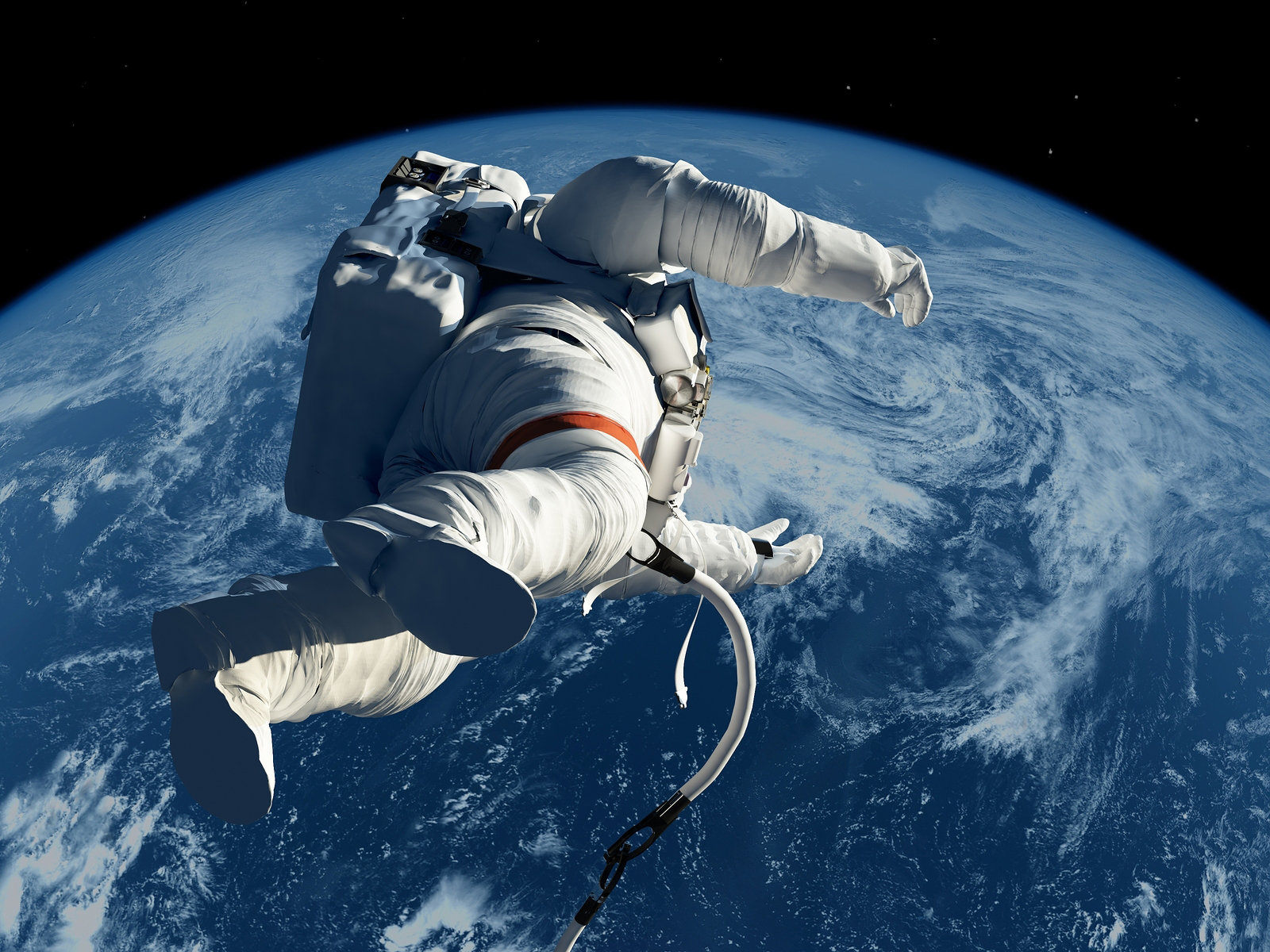
Nearly the entire movie is shot in zero gravity (photo: bigstockphoto.com)
Astrophysicist Neil Degrasse Tyson joins host Steve Curwood to discuss the new movie, Gravity, and other news including Cassini's amazing discovery on Saturn's moon Titan.
Transcript
CURWOOD: It's Living on Earth, I'm Steve Curwood. One of the most popular films to hit the screen recently is Gravity, which features a couple of astronauts - played by Sandra Bullock and George Clooney - untethered in space and bombarded by space junk.
[MOVIE CLIP]
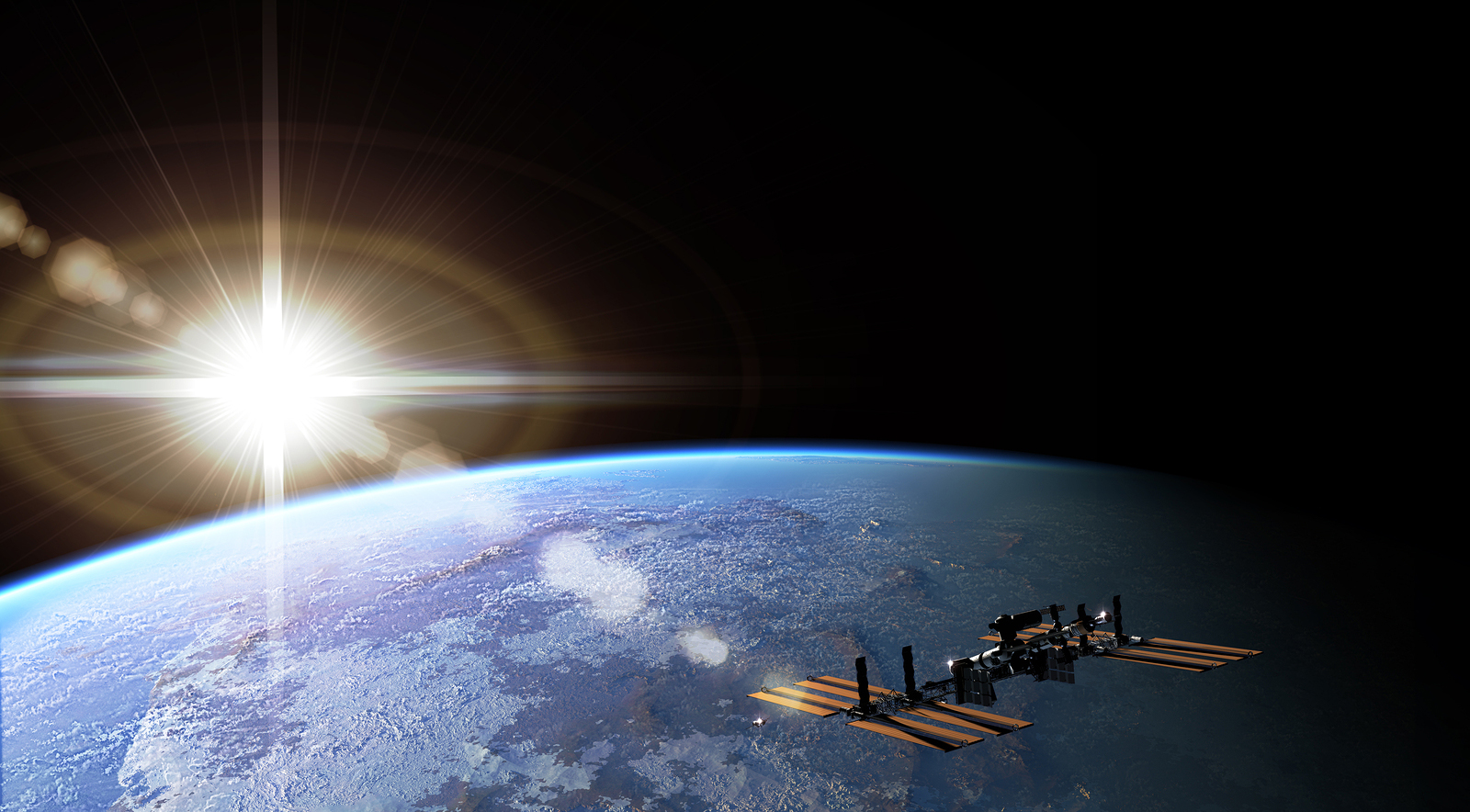
In the movie Gravity, lost astronauts must make their way to the international space station (photo: bigstockphoto.com)
CURWOOD: Well, besides proving popular, this movie received special attention from the fraternity of astrophysicists - who, as experts often will - found some of the depicted science to be a bit wobbly. It also gives us an occasion to call up astrophysicist Neil de Grasse Tyson, the director of the Hayden Planetarium in New York - and one of those scientists who found some nits to pick in the film. Neil, it’s been a while. Welcome back to Living on Earth.
TYSON: Thank you. It has been a while. Yeah you don't call me, you don't text, you don’t write, where’ve you been?
CURWOOD: Well...
TYSON: A lot has happened in the universe since we last talked.
CURWOOD: You know, what can I say, um...
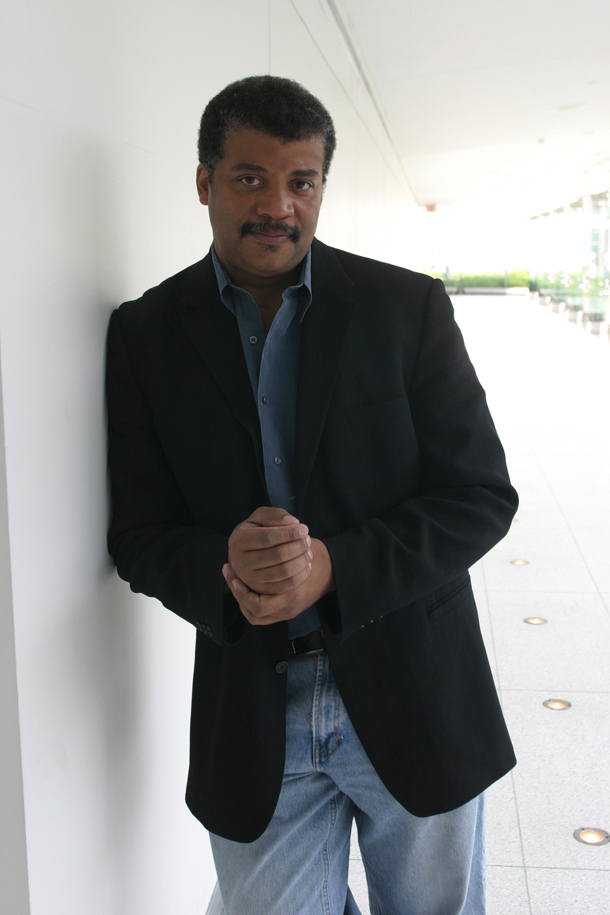
Astrophysicist Neil Degrasse Tyson (Photo: Chris Cassidy/ Casspix.com)
TYSON: [LAUGHS]
CURWOOD: Things are moving at warp speed sometimes, Neil.
TYSON: ...or faster.
CURWOOD:...or faster. [LAUGHS] So you’ve got yourself embroiled in a bit of a row over this new movie Gravity.
TYSON: You know, I’m just...what’s a scientist to do?
CURWOOD: Yeah, I know. [LAUGHS] Well, it all began when you fired off a few tweets questioning some of the science in the movie.
TYSON: It was like a dozen tweets. I could have sent 100 tweets telling everyone what they did right. I could have done that, but people presume that because I cited a few scientific faux pas that all of a sudden I didn’t like the movie, I railed on the movie and all that. No, I thought the movie was fine. I mean, I’ll take any space movie I can get these days. [LAUGHS]
CURWOOD:[LAUGHS] But what did they not quite get right?
TYSON: You know, just little niddly things. Like I said, people...it became a mountain when it was intended just to have fun. I hit the trifecta of the Today Show, Brian Williams, the NBC Nightly News and it was referenced on weekend update on Saturday Night Live. So I thought that people were overreacting really, but...
CURWOOD: [LAUGHS]
TYSON: So a few things. OK. Let’s start simple. So Sandra Bullock’s hair, as well as they did all the rest of the zero G representations, her hair didn’t stand up on end...or maybe she used too much mousse? It looked a little bit like a wig actually, but in any case, you have everything else floating around and her hair just stuck to her head. I thought that was a little weird, but you know, you can let that one go.
CURWOOD: What about her tears?
TYSON: The tears. There’s been some discussion about that because there’re some astronauts on the space shuttle who did some tear experiments to see what would happen if you cry. And so… the surface tension of a tear...this is what keeps a droplet of water almost spherical on a clean surface, you know, like if you have a smooth marble surface and you drop some water on it, the water doesn’t spread out across the entire surface, it just stays in a little ball. So that, what’s called surface tension, it’s a chemical phenomenon on the surface of all liquids so it sticks to things, even to itself. So if you try to tear, it’s likely that the tear will stay on your eyelash or your...the upper or lower eyelashes...or stick to your cheek and just sort of stay there. And so some people criticize that but I didn’t have an issue with that because she’s about to die, or she thinks she’s about to die, and so she might be tearing more than the astronaut who did the experimenting in space.
[LAUGHS]
CURWOOD: [LAUGHS]
TYSON: So I think you can cut a tear cleanly with a good blink, and then the tear floats away. I think that was the most poignant scene in the whole film, and so I give that two thumbs up for capturing an intimate and sensitive zero G moment.
CURWOOD: But there was some confusion about the various low Earth orbits out there.
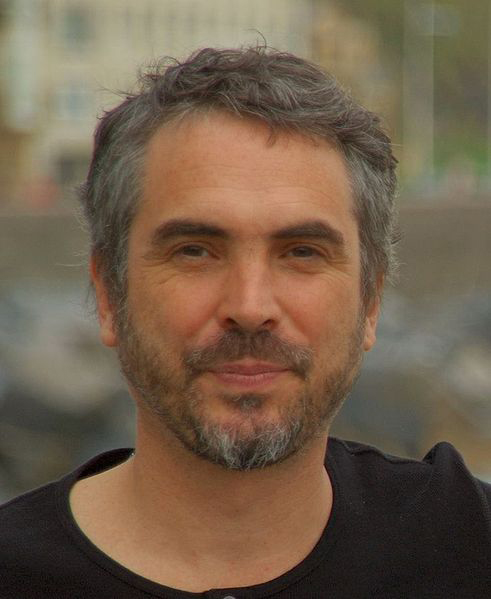
Gravity director, Alfonso Cuarón (photo: Mario Antonia Pena Zapatería)
TYSON: Well, yes, so...I don’t know if this is forgivable, but there they are fixing the Hubble telescope and stuff goes wrong and so they say, “Let’s just go to the space station. There it is!” And they just jet-pack to the space station. The Hubble orbits at 360 miles up and the space station orbits at two-thirds that height, 230 miles up. So first of all, the space station would be below them, not above them, and its closest it’s 130 miles, at its closest. You’re going to jet-pack for 130 miles? Most of the time, you can’t even see it. Earth has a huge surface area. So just to jet to that, and then, “Oh, there’s the Chinese space station. Let’s go there.”
You think that everything’s in view and accessible by jet-pack, and so this is just completely unrealistic, and the orbits don’t even match. The space station orbit is tipped, I think around 50 degrees relative to the equator, and that’s so that it can go over the launch location in Russia where they send cosmonauts to the space station and now including the American astronauts because we’re hitching a ride on the Soyuz because we don’t have a space shuttle. I’m sorry, we’re not hitching, we’re buying the seats to the space station! So that orbit is tipped in that way, whereas, Hubble has an orbit that matches Cape Canaveral. That’s a whole different tilt. He didn’t think that one through. Or maybe he did and ignored it, and that’s possible too.
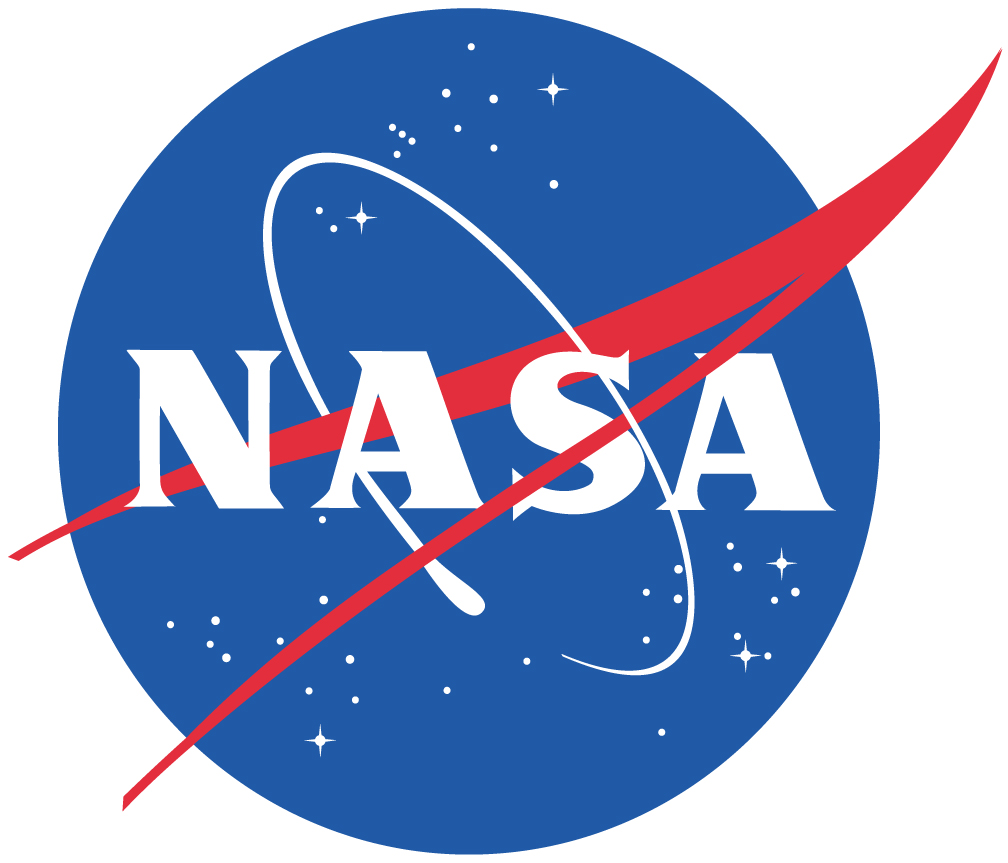
During the government shutdown, NASA was almost completely closed (photo: NASA)
CURWOOD: And yet you love this movie.
TYSON: I enjoyed it. Let me not say love it. I enjoyed it, and I thought it was a nice...99 percent of the movie is in zero G...has anyone done that before? I don’t think so. So you can’t fault someone for not getting everything perfect if they do something that no one has done before. So in that regard, I fully applaud Alfonso’s efforts, the director.
CURWOOD: But next time, if he calls you as consultant, he won’t get this wrong. [LAUGHS]
TYSON: Well, I don’t claim total infallibility. Keep in mind, you only see what’s wrong, after they got everything right. Even the movie 2001:The Space Odyssey from 1968, which gave so much attention to detail of zero G, got a couple of things wrong. There’s a point where the guy’s sipping liquid out of a sack in zero G, and then he stops sipping, and the liquid drops back down the straw. Well, it wouldn’t do that if you’re at zero G. It would just stay there in the straw. They can’t think of everything. I think, I’m complementing the film by citing the things they got wrong. I don’t give a list of things that Star Wars got wrong, I’m sorry. [LAUGHS]
CURWOOD: [LAUGHS]
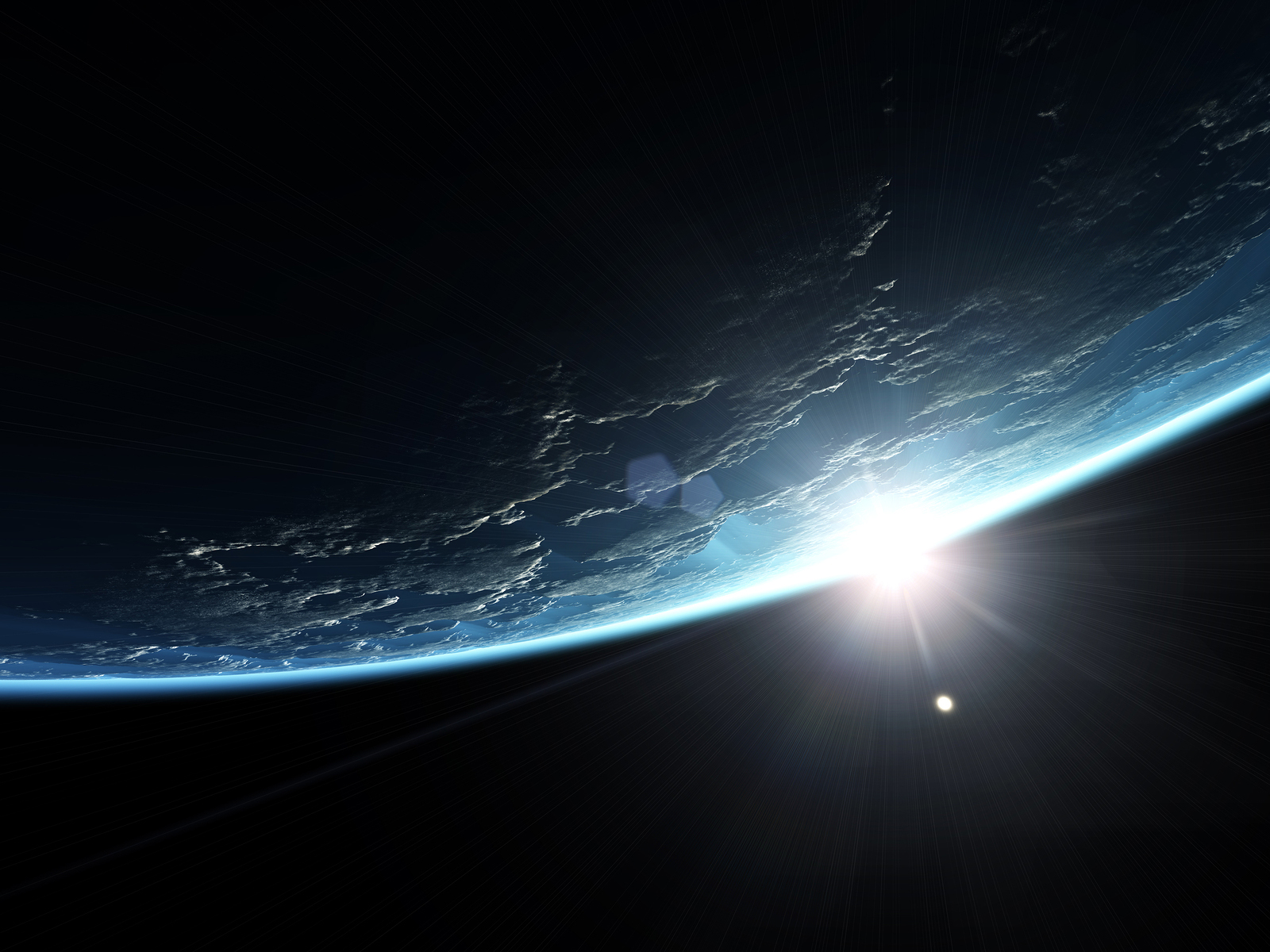
The sun rising over the edge of the earth (photo: bigstockphoto.com)
TYSON: Some movies are not worth that effort. What you do with Star Wars is rather than say what they got wrong, you mention a couple of things that it got right. Right? So if the movie makes no attempt to be scientifically accurate, you find the things they got right, and then you applaud that. In Star Wars, the little double sun was a planet orbiting a binary star system. That was kind of cool, you know, they thought about that because there are binary stars out there, but I think many people, until that movie, didn’t know there are star systems where there are multiple stars orbiting one another - two or more stars. So, that’s something they thought about and they put it in the film. That’s good. I like that.
CURWOOD: So the movie isn’t the only thing about space in the news. A spacecraft called Cassini detected propylene, and that’s what makes plastic, I think it’s number five on the recycling label. They found this on Saturn’s moon Titan. What do you make of this?
TYSON: Yeah, well, Titan is cool. It’s almost like an early Earth, but just at a whole other range of temperatures. So we think of Earth...there’s a temperature that allows liquid water and then the rocks are solid, and the air is oxygen and carbon dioxide. So we have this expectation for what is solid, what is liquid, what is gas. When you go to the moon Titan, Titan is very cold. It orbits Saturn, Saturn’s very far from the sun so the heat sources are very low, but at the very low temperatures that it is, different things are gas, different things are liquid, different things are solid.
For example, the rocks on Titan are ice, which is frozen water. The liquid on Titan is lakes of methane. And so everything is different, but when you’re at a cold temperature, atoms like making molecules because they move really slow, and then they nestle next to another atom, and you can build these huge interesting molecules. If everything is hot, the heat energy breaks apart all your molecules, and there’s a point, there’s a temperature above which, there are no molecules and you just have atoms. Then you can start stripping electrons from atoms and then everything would ionize like hot stars, so like the center of the sun, there’s no atoms, and they’re all stripped and there are no molecules. So on Titan you can make all kinds of complex molecules, and so sure, start tallying what’s there.
CURWOOD: So this could be a shopping mall for those of us here on Earth. I mean, let’s say we run out of oil, maybe we get our plastic from space?
TYSON: [LAUGHS] Yeah, I mean space is vast, and has many more opportunities to make things than we do, so there’s an old saying that unless it’s absolutely prohibited by the laws of physics, then it’s a certainty that it’s out there. [LAUGHS]
CURWOOD: So it’s interesting that the newest Mars Rover, named Curiosity, discovered water in the Martian dirt, but no methane.
TYSON: Yeah, so there was some early evidence that there might have been methane on Mars. What’s fun to think about, regarding methane, is that methane is not a particularly stable molecule. In other words, if Mars had methane when it formed, it wouldn’t have it today because it’s chemically active. So if you see a constant source of methane in a place, we know it’s what they call biogenic processes - life-based processes that create methane - among them is what goes on in your lower intestine, especially farm animals, and this accounts for a large number of the flatulent volume that emanates from cows. So we know that life can make methane. So if you have methane emanating from Mars and it’s persistent, it can force the question, is there active life - biogenic life, biogenic processes - going on in the buried strata of the planet? And so no methane says maybe not, certainly there’s no farm animals!
CURWOOD: But wait a second. Let’s go back to Titan. There’s all this methane. There’s rivers of methane on Titan so I mean is there a lot of life down there that we have no idea about?
TYSON: [LAUGHS] Titan still needs extensive investigation. We just don’t know how you would make life that doesn’t involve liquid water. That’s really what it comes down to. We’re not creative enough to figure that out. We like, actually we require, liquid water. We as not just humans but all life on Earth. So when we look for life elsewhere in the solar system, we hold up the requirement that water is there, otherwise we consider it low likelihood of finding life. It would be low likelihood of finding life as we know it. It could be life that doesn’t require liquid water - maybe it just requires liquid.
So Titan, with liquid methane, maybe there’s life forms that thrive on liquid methane. The liquid methane is the vehicle to carry nutrients and other things through the life form that could possibly evolve there. We don’t know. We have a sample of one, as much as biologists applaud and celebrate the diversity of life on Earth, at the end of the day, they close the door and say, “Look, guys, we’re all based on DNA, and so for that reason alone, we are a sample of one.” And you can do some science, but you can’t truly understand your sample, if you only have a sample of one.
CURWOOD: So, speaking of Mars though, what have the Mars rovers been doing as the government has gone through this partial shutdown?
TYSON: Yeah, so the Mars rovers, they get their energy from the sun, and so, yeah, you keep people on staff as a minimum sort of support, life-support if you will...whatever the word is you would use for rover...rover life-support, but beyond that, no, you’re not doing any interesting work. It’s a tragedy really, especially since NASA got hit heavier that other agencies of the government on the premise that NASA is more expendable.
CURWOOD: So let me ask you this. I mean, overall, how has the government squeeze on funding science - we had the sequester, this partial shutdown, - how has this impacted scientific research?
TYSON: Well, yeah, so it’s like everything. It’s put this gap in funding, if you were going to receive money, you didn’t receive money; it’s unfortunate, of course it affects everything. So I don’t want to say fund science and nothing else. We want to run the damn country, right?
So I think the real solution here is...it’s - I don’t blame Congress because we voted for everyone in Congress...we the electorate. So what you do is vote them all out of office next time around and put in people who in your best judgement would not be susceptible to this kind of tomfoolery.
CURWOOD: But how do scientists cope with someone saying, “Hey, just put this experiment on pause for a month.”
TYSON: There’s not much track record to say, “this is what we usually do when governments shut down”. [LAUGHS] Obviously we can still work, but certain machines that are supported by the government, for example, the National Radio Astronomy Observatories, including the VLA which was prominently featured in the movie Contact, and several others, they’re all shut down.
CURWOOD: Wait. Wait. What if an asteroid heads our way? Are we going to miss this?
TYSON: Oh, yeah. Wouldn’t that be interesting? Have you seen the poster that says, “Asteroids. Nature’s way of asking ‘How’s that space program coming along?’” You know, just at a time when earlier this year there was an asteroid strike over Chelyabinsk in Siberia, that was back in, what was it, February 15? An asteroid came in and exploded over that town, it shattered windows, it injured 1,000 people, and there’s a shot across our bow right there, and that was an asteroid that had 25 times the energy of the bomb dropped in Hiroshima.
That’s just a reminder, and the solar system’s a shooting gallery. If the government is closed, that’s a bad excuse to give for not saving the planet. I joke about this, I’d be embarrassed if aliens came and landed here and said, “Oh, you’ve got a space program. What do you have in place to deflect asteroids?” “Nothing.” “Oh, the universe is full of energy. Where are you getting your energy source from?” “Oh, we’re fighting wars to pull it out from the ground from under where people live.” I would just be embarrassed, and I don’t want to tell the aliens about us.
CURWOOD: So, before you go, what about Voyager?
TYSON: Yeah, so Voyager, the Little Engine that Could! It just left the magnetic influence of the sun. The sun influences charged particles in its vicinity, and if you go out far enough, there’s a point where you don’t know if the sun is influencing you, or if the rest of the galaxy is, and across that boundary, that’s where Voyager has voyaged, and that’s the last important boundary that it will cross, and it’s a piece of human hardware with a record of our civilization on it. Little old record... sounds of heartbeats and greetings in 55 languages and music from cultures all around the world. This is affixed to a sign for any alien that might come across this spacecraft that could then...there are instructions on how to listen to this sound as well. And they could learn who and what we are. Some people criticized it because you don’t give your return address to strangers in the street of your same species. On Voyager, we’re actually giving our return address to aliens who might come upon it and let them know exactly where Earth is if they find it. But it’s a...I think it was a project where the heart of everyone in it was in the right place, and it came out of the Carl Sagan and dream collaboration back in the 1970s.
CURWOOD: Neil de Grasse Tyson is an astrophysicist and head of the Hayden Planetarium. Thanks so much for taking this time, Neil.
TYSON: OK. Excellent. Thanks for having me!
Links
Living on Earth wants to hear from you!
Living on Earth
62 Calef Highway, Suite 212
Lee, NH 03861
Telephone: 617-287-4121
E-mail: comments@loe.org
Newsletter [Click here]
Donate to Living on Earth!
Living on Earth is an independent media program and relies entirely on contributions from listeners and institutions supporting public service. Please donate now to preserve an independent environmental voice.
NewsletterLiving on Earth offers a weekly delivery of the show's rundown to your mailbox. Sign up for our newsletter today!
 Sailors For The Sea: Be the change you want to sea.
Sailors For The Sea: Be the change you want to sea.
 The Grantham Foundation for the Protection of the Environment: Committed to protecting and improving the health of the global environment.
The Grantham Foundation for the Protection of the Environment: Committed to protecting and improving the health of the global environment.
 Contribute to Living on Earth and receive, as our gift to you, an archival print of one of Mark Seth Lender's extraordinary wildlife photographs. Follow the link to see Mark's current collection of photographs.
Contribute to Living on Earth and receive, as our gift to you, an archival print of one of Mark Seth Lender's extraordinary wildlife photographs. Follow the link to see Mark's current collection of photographs.
 Buy a signed copy of Mark Seth Lender's book Smeagull the Seagull & support Living on Earth
Buy a signed copy of Mark Seth Lender's book Smeagull the Seagull & support Living on Earth

